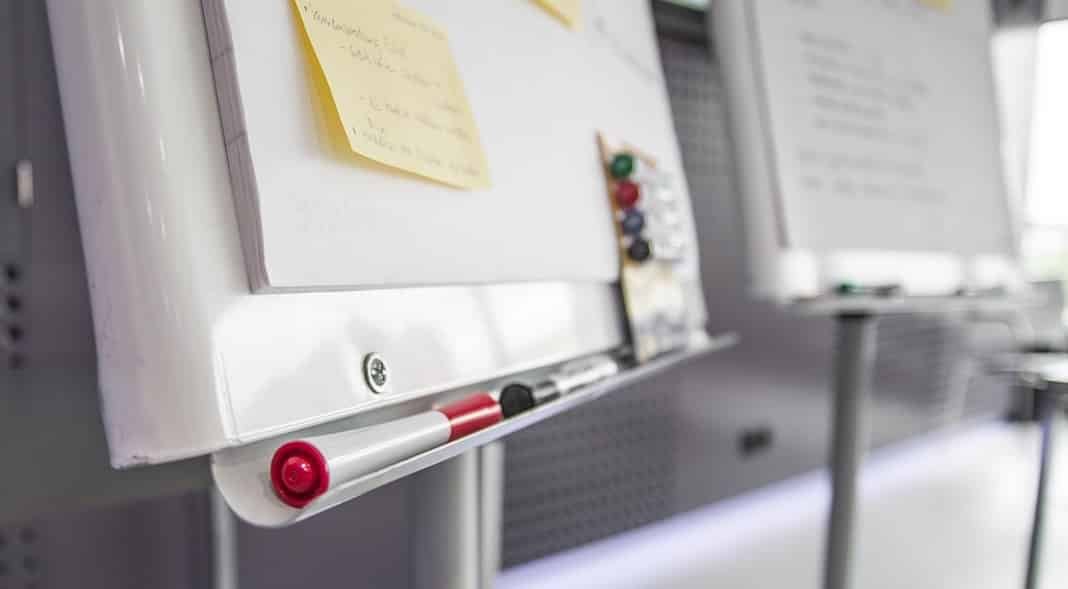Crafting Plagiarism-Resistant Assignments
Focusing on prevention, not the cure...
 When it comes to battling plagiarism in the classroom, a lot of emphasis is placed on detecting plagiarism and responding to it.
When it comes to battling plagiarism in the classroom, a lot of emphasis is placed on detecting plagiarism and responding to it.
While detection and enforcement is certainly important, the emphasis on it is akin to a doctor doing everything they can to treat diseases while ignoring simple things that can prevent them.
As with viruses, preventing plagiarism is cheaper and easier than battling it after it becomes a problem. However, many instructors and schools ignore opportunities to not just discourage plagiarism, but to make it nearly impossible.
One of the best tools for that achieving that is plagiarism-resistant assignments.
Best of all, this is a step that instructors can implement immediately without making drastic changes to the way they teach or support from their school.
All that’s required is a shift in what assignments are given and how they are graded.
Crafting a Plagiarism-Resistant Assignment
 To make assignments more difficult to plagiarize, we have to combat the two reasons they’re easy to cheat on.
To make assignments more difficult to plagiarize, we have to combat the two reasons they’re easy to cheat on.
- Most Assignments Can Be Trivially Searched For: Students are often able to go to a computer, punch their assignment into Google and get complete or near-complete answers.
- Students Rarely Have to Prove Their Knowledge or Work: Students often aren’t asked to showcase any additional knowledge on the subject beyond what’s in the final paper they submit. This means they can get a good grade without really knowing the subject.
In short, far too often students leave the classroom, search for the topic of their assignment, find the answer delivered to them via the internet and decide to copy it. Outside of the chance of getting caught, there is no deterrent to stop them and no benefit to doing more work.
To prevent that from happening, we change both the assignments students are given and how they are given, but it all starts with the topic itself.
Making Assignments Google-Proof
 Before handing an assignment to students, take a moment to search for it yourself. Find the resources that are out there on the topic and see if they completely or nearly-completely answer the question.
Before handing an assignment to students, take a moment to search for it yourself. Find the resources that are out there on the topic and see if they completely or nearly-completely answer the question.
If there are such sources, then the assignment likely needs to be tweaked.
For example, if you search for the symbolism of the attic in Jane Eyre, you’ll find several resources that discuss it in great detail. Do a similar search comparing and contrasting the symbolism of Jane Eyre to the lyrics of a popular song and you’ll find significantly fewer results (if any).
The goal is to create assignments that require the students to work with the information they find, not simply repeat it. Once students can simply repeat an answer they got elsewhere, the door to plagiarism is thrown wide open.
It’s also worth noting that you don’t want to reuse the same assignment year after year. However, that doesn’t mean assignments need to be completely thrown out. Using the Jane Eyre example, you can change which symbols you use or what you contrast them to.
This lets each year’s class cover the same ground, but in a way where a paper from a previous year will not complete this year’s assignment.
Require Additional Work
 Rather than simply having students turn in a final paper and nothing else, requiring students to show their work or their understanding can help a great deal.
Rather than simply having students turn in a final paper and nothing else, requiring students to show their work or their understanding can help a great deal.
Having students turn in rough drafts of their work or their notes (if appropriate), means you can examine their progress through the assignment and that they can’t simply copy and paste their way to a final paper.
While this may not prevent plagiarism wholly, it at least makes it much more difficult, requiring students to take significantly more time to complete their fraud.
It is even better if some of that work can be done in class. While an essay can be plagiarized it’s much more difficult to fake knowledge in a short presentation, ideally one that’s given at the same time the paper is submitted.
In class work can be difficult or even impossible if classroom size is too large but, when it is practical, it makes plagiarism nearly impossible as, at the very least, the student has to actually know the subject.
However, even if in-class work isn’t practical, requiring students to share more of their process in creating the paper not only helps deter plagiarism, but also helps diagnose any potential issues the student may have.
That, in turn, is probably the greatest benefit of this approach. It doesn’t just reduce plagiarism, it can make grading and feedback more effective.
Bottom Line
When it comes to creating plagiarism-resistant assignments, there shades of resistance. The end goal isn’t necessarily to give assignments that are fully plagiarism-proof, which is an impossible goal anyway, but to make them more resistant than they were.
At the most basic level, searching for your assignments in Google and making sure that they can’t be trivially answered with available sources goes a long way to deterring plagiarism. Crafting more complex assignments that test how students use the information they find goes even farther.
While it would be ideal for every instructor and every assignment to be completely unique and have significant in-classroom portions that are graded by educators who know their students very well, that isn’t practical with the time and resources available.
Instead, the goal is to do what one can to make assignments more difficult to plagiarize. Even if the changes are small and subtle, they can go a long way to deterring plagiarism.
While this does mean making an investment of time and resources, just as with preventative medicine, it’s’ cheaper in the long run simply because how time-consuming dealing with plagiarism can be after the fact.
Want to Reuse or Republish this Content?
If you want to feature this article in your site, classroom or elsewhere, just let us know! We usually grant permission within 24 hours.
